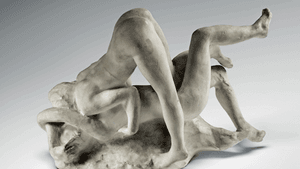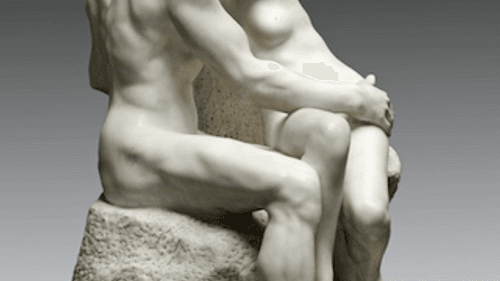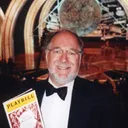Stay in the Loop
BSR publishes on a weekly schedule, with an email newsletter every Wednesday and Thursday morning. There’s no paywall, and subscribing is always free.
Feels like the first time
The Rodin Museum presents a new installation of 'The Kiss'

A new installation of sculpture at the Rodin Museum, in celebration of the centenary of the artist’s death, is centered on the theme of passionate embrace. This Philadelphia institution has joined with worldwide art museums in a program of major Rodin projects, unified under the title #Rodin100. In addition, the Barnes Foundation, in collaboration with the Musée Rodin in Paris, will present the exhibition Kiefer Rodin in November 2017, which will bring together work by Auguste Rodin and Anselm Kiefer.
The centerpiece of the Rodin Museum’s exhibition is a larger-than-life copy of his original Kiss, carved in marble in 1929 by Henri Gréber. For years, the sculpture was outdoors; now it’s back inside. Rodin (1840-1917) originally titled his piece Francesca da Rimini, as in Dante’s Inferno, about an adulterous affair. A journalist persuaded Rodin to rename it The Kiss.
Kisses, four ways
Rodin broke from convention with his portrayal of nude bodies and frank sexuality. In a new grouping, The Kiss is surrounded by clays, plasters, bronzes, and marbles of men and women (plus some women with children, and one lesbian couple), all deeply expressive. Also worth special attention is I Am Beautiful, made in clay in 1885 and cast in bronze in 1925-26. This was another look at the same doomed couple, and Rodin at first called it Paolo and Francesca. The American sculptor Truman Bartlett wrote in 1887, “It seems as though the soul of the woman, in haste to meet her lover, had shot through the air like a thought, to find rest in his arms.” Curator Jennifer Thompson pointed out a similarity between The Kiss and The Cathedral: Two raised right hands whose fingertips are about to touch. The anticipation of this intimacy creates a charged space somewhat like the moment when a couple’s lips meet.
Throughout, it’s fascinating to see the relationships as Rodin proceeded from clay to plaster to bronze and marble. Eternal Springtime is shown in two versions. It was made in clay in 1884, then cast in bronze sometime between 1898 and 1918. Here Rodin depicted lovers in a floating embrace, with graceful outstretched limbs. When he made the bronze casting, Rodin had to lower the long upward extension of one arm because it would be too fragile. Damned Women, made in clay in 1885 and later cast in plaster, shows female lovers arch-backed, head over heels. Rodin’s models were dancers from the Paris Opera, recommended to him by his friend Edgar Degas.

Rodin complained in 1912, “People have often accused me of having made erotic sculptures. I have never made a sculpture for the sake of the erotic element.”
Nevertheless, he was clearly fascinated by couples embracing, kissing, tumbling, and even wrestling. A favored subject was a woman leaping up to a man’s chest while wrapping her legs around his waist. Some viewers still think of him as a dirty old man, and that possibility enlivens this reinstallation at one of the world’s largest collections of Rodin’s work.
Food for thought
Not all the exhibition's pieces feature lovers. One item with special appeal is a bust of composer Gustav Mahler from 1909, two years before the composer’s death. Rodin and Mahler were admirers of one another. Victor Hugo was modeled in clay in 1883 and cast in plaster in 1886. The Thinker is also in attendance. Rendered in clay in 1880 and subsequently cast in bronze in three different sizes, this is the original medium-sized figure.
The Parkway’s Rodin Museum was established by movie-theater owner Jules Mastbaum and is the only museum outside France dedicated entirely to Rodin’s work. Mastbaum had his own personal collection of Rodin originals in his Rittenhouse Square home. In 1925 he commissioned Rodin’s estate to make bronze castings of many additional masterpieces and planned this building and its grounds as his gift to the city of Philadelphia. He died unexpectedly from appendicitis at 54. The museum opened in 1929 and is operated by the Philadelphia Museum of Art.
The museum has much more Rodin art in storage than it can show at one time, and plans to rotate its contents every two years.
What, When, Where
The Kiss. Through January 2019 at the Rodin Museum, 2151 Benjamin Franklin Parkway, Philadelphia. (215) 763-8100 or rodinmuseum.org.
Sign up for our newsletter
All of the week's new articles, all in one place. Sign up for the free weekly BSR newsletters, and don't miss a conversation.
 Steve Cohen
Steve Cohen